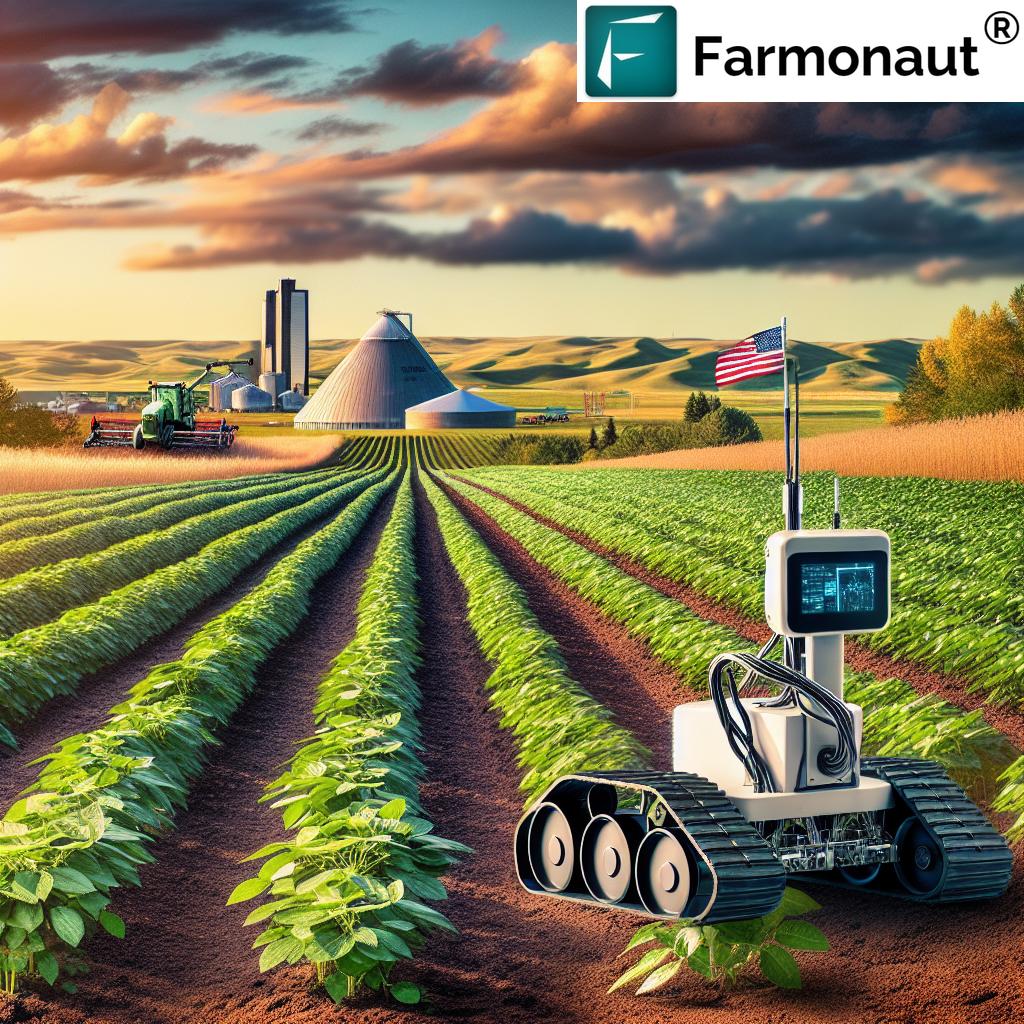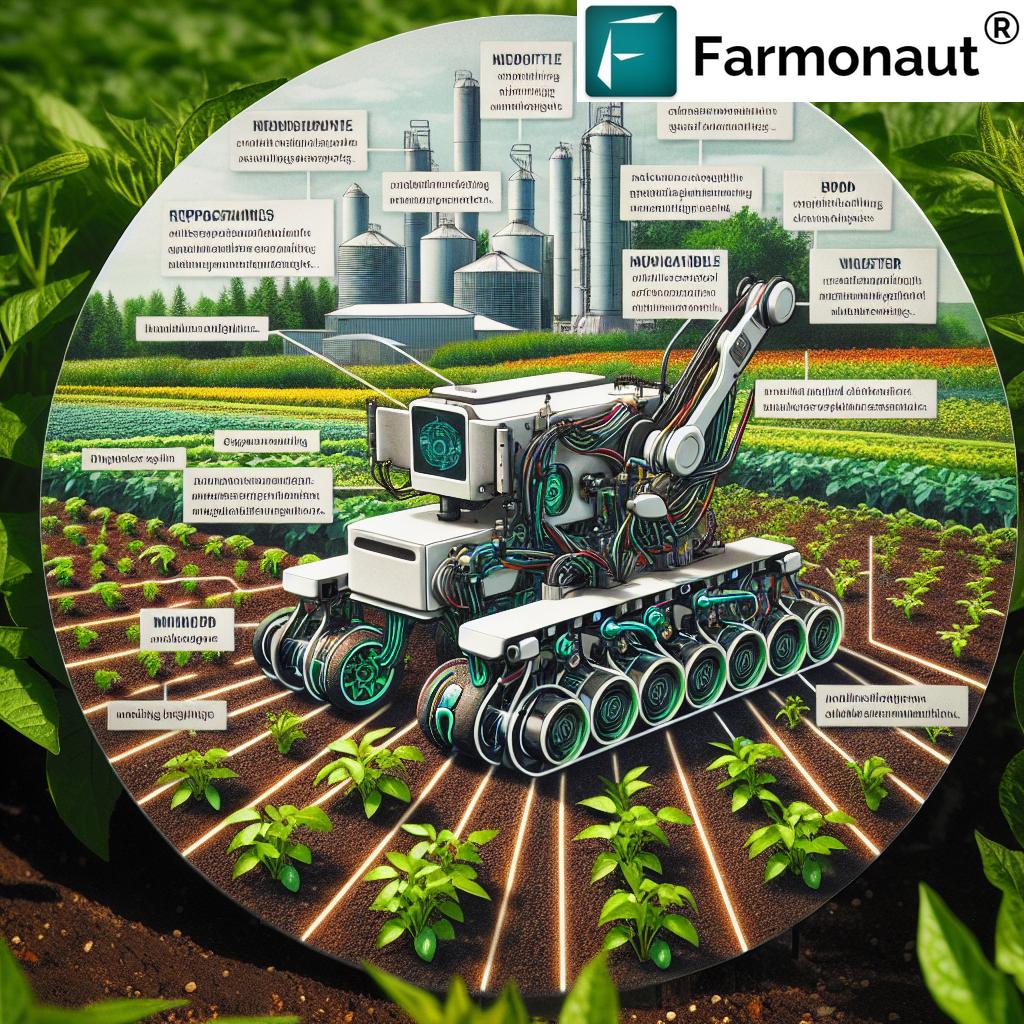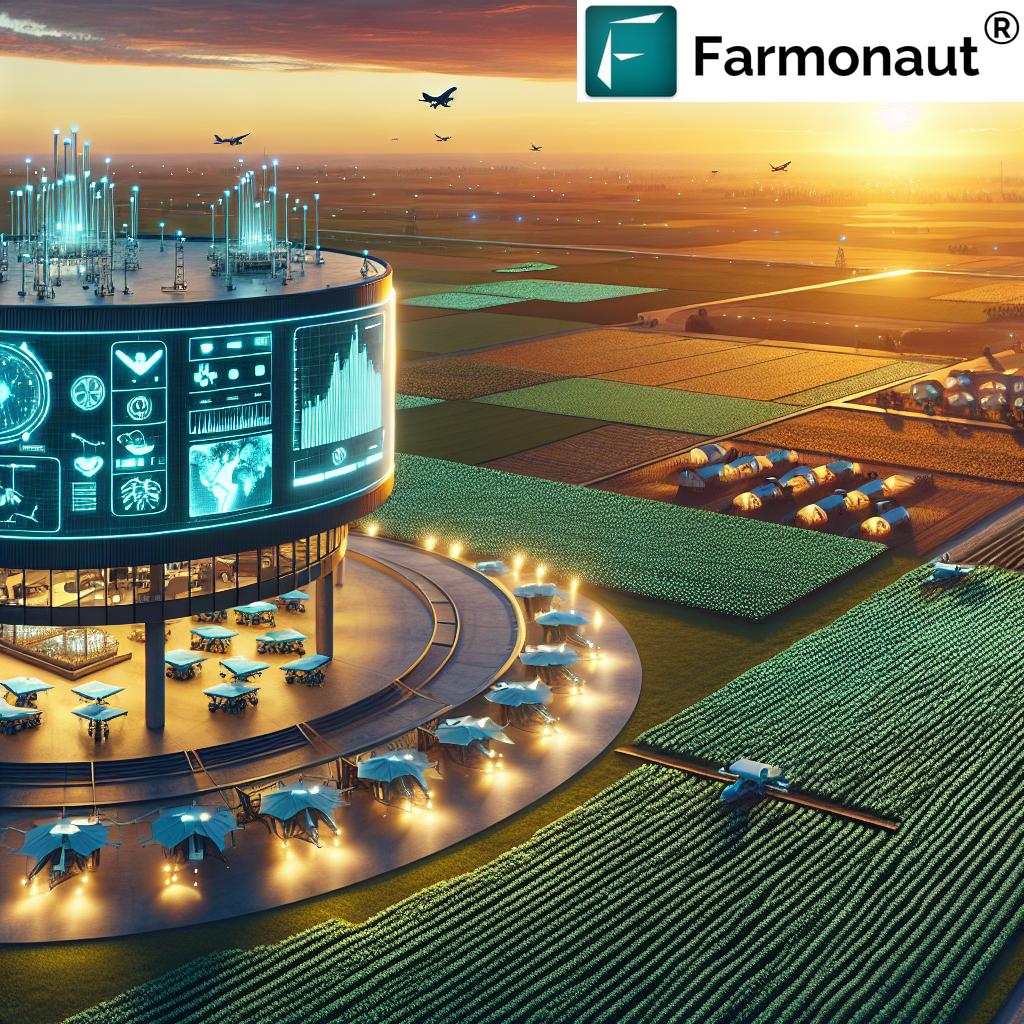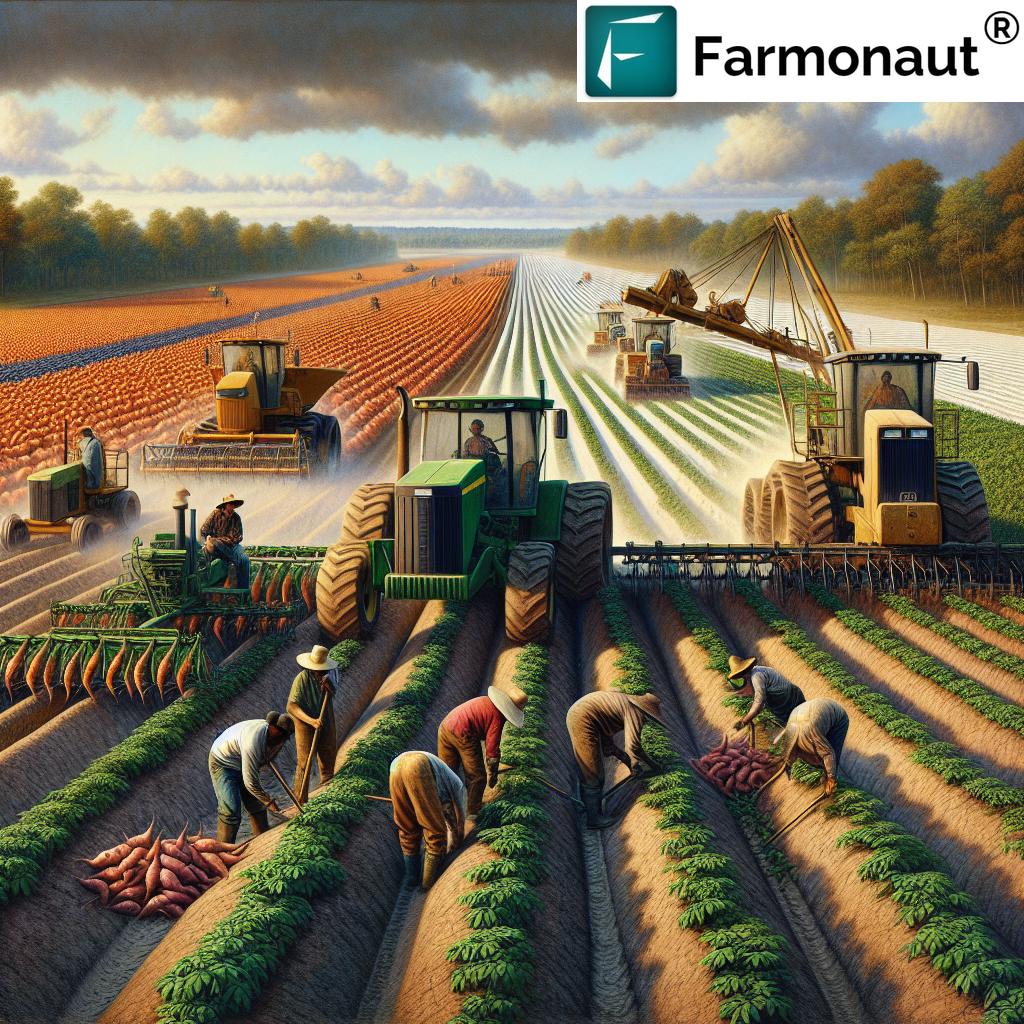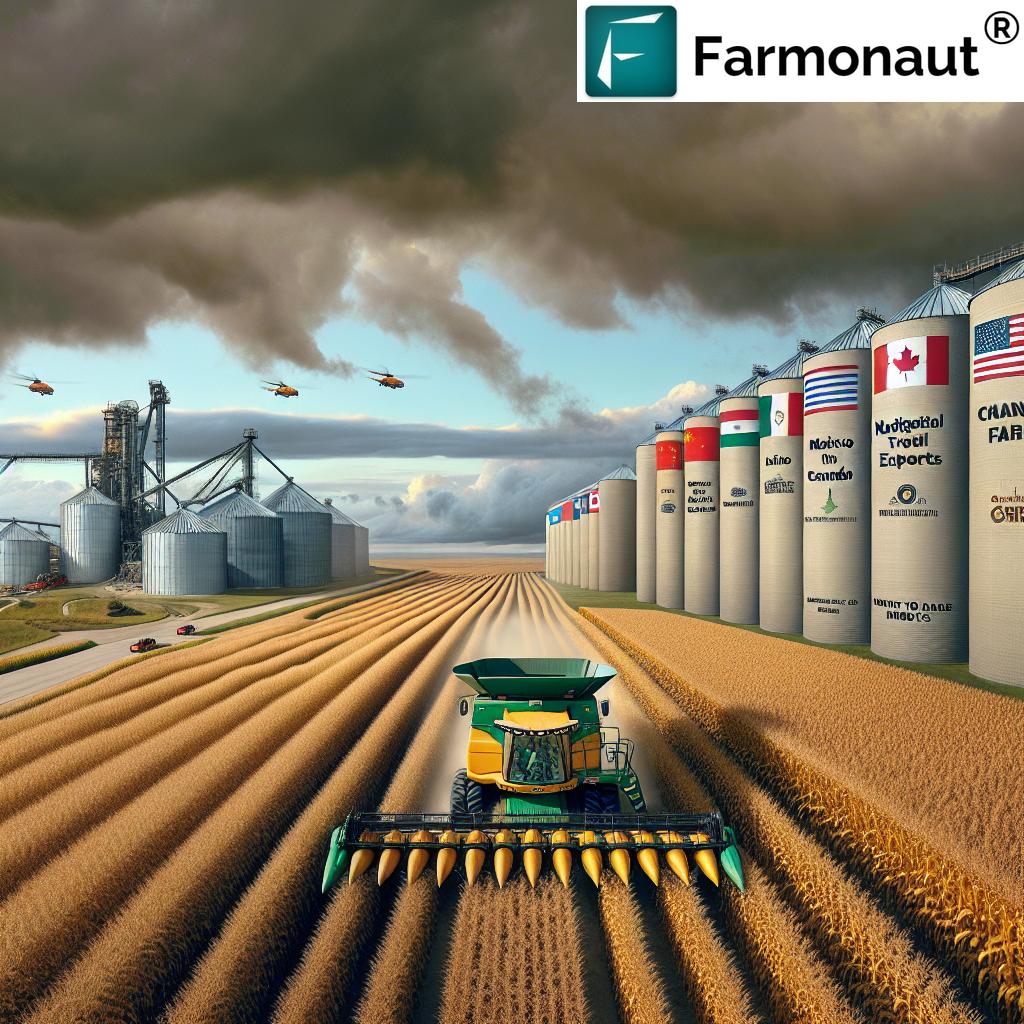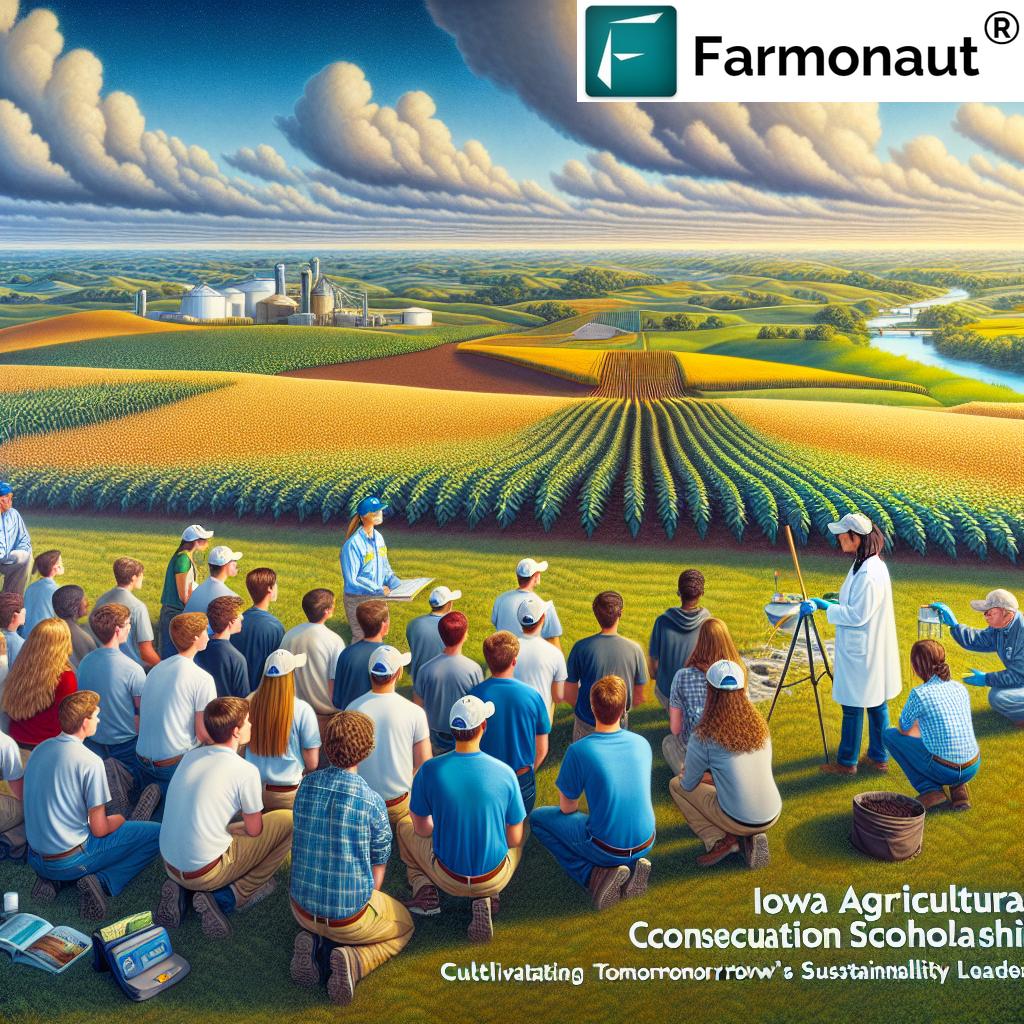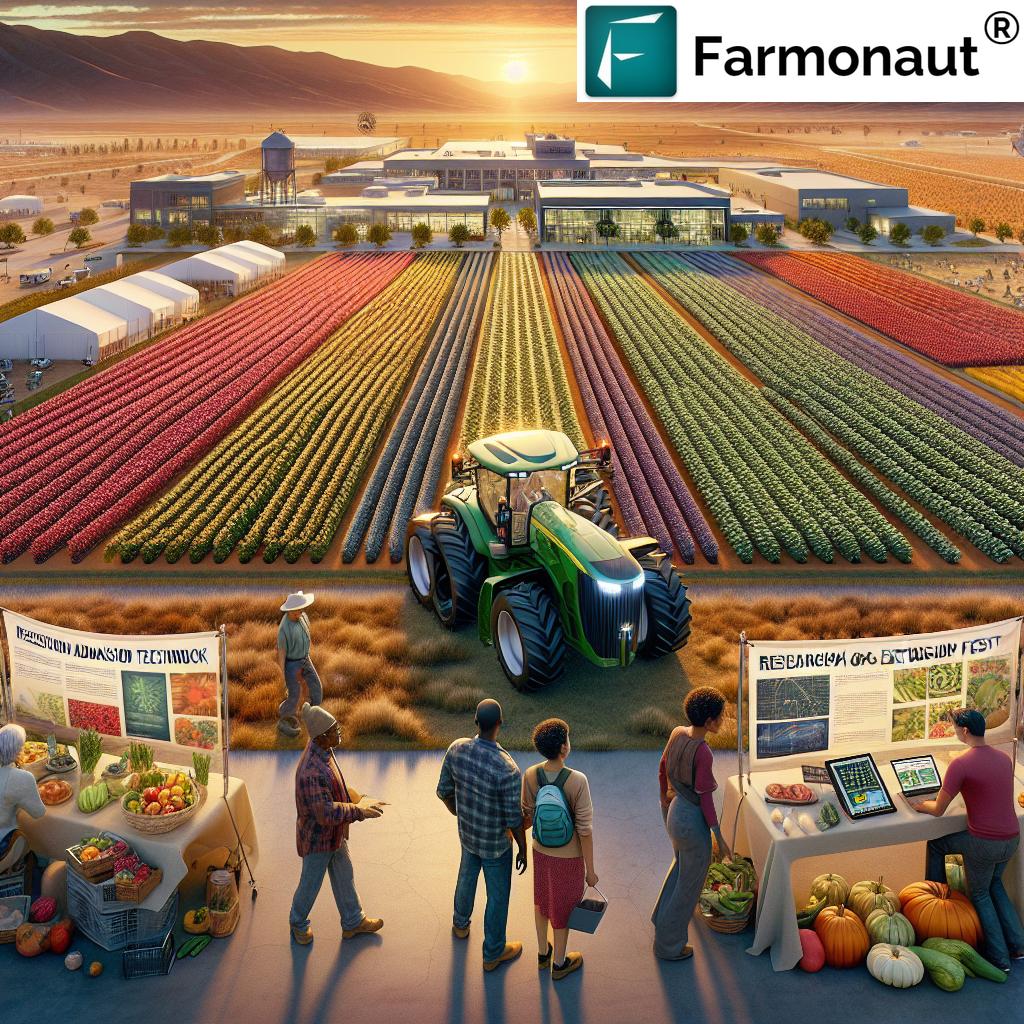Farm Robotics Challenge: 5 Innovative Solutions From North Dakota
Meta Description: Explore the top 5 innovative solutions in the Farm Robotics Challenge—precision weeding, autonomous drones, and more—transforming agriculture in North Dakota with cutting-edge robotic technology.
“North Dakota’s Farm Robotics Challenge featured 5 teams pioneering precision weeding and autonomous drone technologies in 2024.”
- Introduction
- About the Farm Robotics Challenge
- 5 Leading North Dakota Innovations in Farm Robotics Challenge
- How Robotics in Farming Is Transforming North Dakota’s Agriculture
- Farmonaut: Redefining Precision Agriculture & Farm Management
- Comparison Table: 5 Farm Robotics Solutions
- FAQ: Farm Robotics & Precision Ag
- Conclusion
Introduction: Unveiling North Dakota’s Farm Robotics Challenge
The farm robotics challenge has become the epicenter for innovative agricultural engineering, attracting top students, engineers, and researchers from North Dakota, Minnesota, and across the globe. This annual event—hosted by UC Agriculture and Natural Resources and the AI Institute for Next Generation Food Systems—invites universities to design robots that tackle real-world farm, weed, and soil management problems. In 2024, the spotlight fell on North Dakota State University (NDSU) and the University of Minnesota, whose teams presented groundbreaking solutions in precision weeding, thermal weed management, and autonomous drone-based crop surveillance.
In this blog, we explore how five innovative technologies showcased at the farm robotics challenge are redefining the future of agriculture in North Dakota—and what this means for farmers worldwide seeking sustainable, data-driven, and cost-efficient farm management solutions.
Why North Dakota, and Why Now?
North Dakota’s sprawling landscape, soybean fields, and diverse farms have long served as a living laboratory for agricultural robots. With herbicide resistance, labor shortages, and a pressing need for sustainability, the region embodies the challenges—and the vast opportunities—for deploying robotics in agriculture. The 2025 Farm Robotics Challenge was a showcase of the region’s ingenuity, with NDSU and local farmers collaborating closely to develop practical, high-impact solutions.
About the Farm Robotics Challenge: A Platform for Global Innovation
The farm robotics challenge is more than a competition; it is a crucible for addressing real-world farm challenges using robotic technology. Teams from across the U.S. and internationally—including colleges and universities—identify urgent problems in weed control, crop protection, and resource management, and then engineer robots that offer measurable, sustainable solutions. The objective is to apply research and creativity to the pain points of modern farming: excessive herbicide use, soil degradation, wildlife depredation, and high operational costs.
With faculty advisors and students from both undergraduate and graduate backgrounds, the challenge is at the intersection of innovation, education, and agricultural impact.
- Location: North Dakota State University, partnered with University of Minnesota
- Key Stakeholders: NDSU Ag & Biosystems Engineering Department, Minnesota College of Science & Engineering
- Focus Areas: Weed management, crop protection, precision farming, data-driven agriculture
- Eligibility: Undergraduate, graduate, and international research teams
5 Leading North Dakota Innovations in Farm Robotics Challenge
Let’s dive into five standout agricultural robotics solutions from North Dakota’s 2024 Farm Robotics Challenge. Each exemplifies engineering excellence and a commitment to sustainable farming, precision weeding, and resource optimization using the latest in robotic technology.
“Over 80% of showcased solutions focused on sustainable weed control using advanced robotics and AI-driven systems.”
1. Hot Attack: Thermal Weed Control Robot
The Hot Attack team at NDSU, led by James Y. Kim, Ph.D., research agricultural engineer and affiliate graduate faculty, tackled the escalating problem of herbicide-resistant weeds in North Dakota. Their approach replaced traditional chemical application with robust thermal weed control technology. Here’s how their robot changes the game:
- Thermal System: Integrates a tankless water heater for eco-friendly, energy-efficient weed removal.
- Smart Targeting: Uses vision sensors and individually controlled nozzles to apply hot water only where needed, reducing waste and chemical exposure.
- Balance & Efficiency: Water tank design provides stability and ensures even, site-specific coverage.
Problem Identified: “Farmers manage weeds by applying chemical herbicides to minimize weed pressure and maximize crop yield. However, this traditional blanket application is expensive and creates environmental concern because the overuse of toxic chemicals leads to the evolution of herbicide-resistant weeds, contamination in soil and groundwater, and potential health risks to humans and livestock.”
Why Is This Important?
- Directly addresses the issue of resistant weeds without contributing to chemical buildup in the environment.
- Reduces potential health and ecological risks for organic farms and conventional growers alike.
Alt text: Farm Robotics Challenge: 5 Innovative Solutions From North Dakota – thermal weed control system.
2. Site-Specific Mechanical Weeder with Weed Mapping
The second NDSU solution is a precision-engineered three-row mechanical weeding robot. Designed under the guidance of Sulaymon Eshkabilov, Ph.D., Assistant Professor in Ag & Biosystems Engineering, this robot takes on the most labor- and energy-intensive operations: organic weed management.
- Site-Specific Action: Utilizes a weed prescription map—a digital guide highlighting exact locations of weed clusters—for highly targeted mechanical weeding.
- Mechanical Weeding: Eliminates broad, energy-wasting fieldwork; only required areas are cultivated.
- Energy Efficient: Optimizes fuel, time, and machine wear, reducing overall tractor and operational costs.
Problem Identified: “For organic farmers, weed control is the most labor- and energy-intensive operation. In organic farming, soil cultivation applied to the whole field leads to considerable soil moisture and nutrient losses, as well as additional tractor fuel use, time, and machinery wear.”
Key Benefits
- Boosts efficiency by reducing time spent on non-essential cultivation.
- Preserves soil moisture and nutrients—essential for crop health in organic systems.
- Ideal for soybean farms, where row spacing and weed outbreaks are variable across fields.
3. FarmGuard: Autonomous Drone For Deer Detection and Crop Loss Prevention
The University of Minnesota’s FarmGuard team—mentored by Maria Gini, Ph.D.—focused on safeguarding crop yield from deer, a persistent source of crop loss for small and organic farms. Their solution is a high-tech, autonomous drone for agriculture:
- 24/7 Surveillance: Drones patrol fields, equipped with vision systems to identify and deter deer before damage occurs.
- Targeted Deterrence: Replaces expensive, traditional deer deterrents (fencing, mesh), lowering both costs and labor requirements for local farms.
- Data & Insights: Real-time alerts and movement mapping allow farmers to make informed decisions, adapt field strategies, and increase crop protection effectiveness.
Problem Identified: “Traditional deer deterrents like fencing and mesh are expensive and only somewhat effective. Farms experience significant crop loss annually. The FarmGuard project aims to provide a more reliable and cost-effective way to protect crops from deer depredation.”
4. Soil and Moisture Management Robots
Another vital area in the farm robotics challenge was soil and water resource management. North Dakota’s teams engineered robots to identify soil health problems, monitor moisture, and adapt irrigation or tillage based on real-time conditions. These systems help promote efficient water application, conserve energy, and ensure optimal soil fertility for crop yield maximization.
- Sensor Arrays: Robots are equipped with advanced multispectral, infrared, and moisture sensors.
- Data-Driven Actions: Automated recommendations—like precise tillage depth or irrigation scheduling—are delivered directly to farm machinery or farm managers.
- Labor Reduction: Takes over repetitive or time-consuming manual monitoring tasks, freeing up valuable workforce time.
Farmonaut’s Role in Soil and Moisture Management
Platforms like Farmonaut’s Large Scale Farm Management tool further empower farmers and agribusiness managers to harness remote sensing and satellite data for field health analytics, resource allocation, and risk mitigation—with no need for physical farm robots or expensive ground hardware.
5. Robotics for Energy-Efficient Farm Management
Reducing both operational costs and environmental impact is a common thread in all successful entries. North Dakota’s robotics teams emphasized:
- Targeted Action: Each robot performs only the exact amount of work required, minimizing unnecessary energy use and cutting fuel consumption—especially for operations involving tractors and farm equipment.
- Sustainable Power: Some systems utilize solar or hybrid energy sources for recharging, making farm robots viable even in remote or off-grid environments.
- Long-Term Savings: Early results indicate operational cost reductions and significantly lower environmental footprints compared to traditional blanket approaches.
How Robotics in Farming Is Transforming North Dakota’s Agriculture
The North Dakota farm robotics challenge exemplifies how combining engineering, AI, and data-driven technology produces far-reaching benefits:
- Precision weeding robots—like the Hot Attack team’s thermal system—directly address the growing concern of herbicide-resistant weeds by offering a targeted, non-chemical management strategy.
- Autonomous drones (as deployed by FarmGuard) dramatically cut yield losses from wildlife and introduce proactive, real-time surveillance that was previously impractical for small and sustainable farms.
- Soil and moisture monitoring robots bring new levels of efficiency to resource management—vital for North Dakota’s often unpredictable growing conditions.
- Organic weed management robots make farming less labor- and resource-intensive, preserving soil health while keeping input costs in check.
- Energy-efficient approaches mean robotics can be adopted on more local farms—not just large operations—offering a scalable path to true farm engineering innovation.
Real-World Challenges, Tangible Solutions
By fostering collaboration between research departments, farms, undergraduate/graduate students, and local agricultural experts, North Dakota is moving agricultural robotics from test plots to the hands of real-world farmers.
These efforts dovetail with support from precision agriculture tech providers, such as Farmonaut, who empower farmers globally to leverage satellite-based crop monitoring, resource management, and AI-based farm advisory systems—making advanced farming solutions accessible and affordable.
Farmonaut: Redefining Precision Agriculture & Farm Management
As robotics, AI, and engineering solutions become the new norm in sustainable farming, digital platforms like Farmonaut play an indispensable role in data-driven, precision agriculture—especially in regions like North Dakota where remote management and scalable analytics are paramount.
Farmonaut is a pioneering agricultural technology company that democratizes advanced farm management with its satellite-based solutions. Let’s briefly explore its most valued features and their direct impact on today’s farming landscape:
- Satellite Crop Monitoring (App/Web App): Multispectral imagery for crop health, NDVI, soil moisture, and disease detection—without needing in-field sensors or robots.
- Jeevn AI Advisory System: Personalized insights and AI-driven recommendations for every growth phase, powered by real-time environmental and satellite data.
- Blockchain-Based Product Traceability (Learn More): Transparent, verifiable tracking from farm to shelf—crucial for building consumer trust in food and textile supply chains.
- Fleet and Resource Management (Fleet Management Info): Efficient, real-time logistics and asset management improve operational efficiency for farms large and small.
- Carbon Footprinting (Track Your Carbon Footprint): Real-time emissions tracking to enable more sustainable farm practices and compliance with evolving agri-environmental regulations.
- Crop Loan & Insurance Satellite Verification (See How It Works): Streamlined, fraud-resistant approvals for crop loans and insurance, leveraging up-to-date satellite data for accurate field verification.
- API for Integration (API Access, Developer Docs): Directly connect Farmonaut’s core features with your custom analytics, farm software, and research tools.
Want to get started? Choose the platform that fits you best:
Learn how Farmonaut can help manage large-scale farms, plantations, and forests efficiently via its dedicated agro-admin platform. This app offers a centralized dashboard for monitoring all your remote and local agricultural operations.
Comparison Table: 5 Farm Robotics Solutions
| Solution/Technology Name | Key Function | Main Innovation | Estimated Efficiency Improvement (%) | Estimated Cost Reduction (%) | Environmental Impact |
|---|---|---|---|---|---|
| Hot Attack Thermal Robot (NDSU) | Precision Weeding | Tankless hot water thermal application; targeted AI vision | 55-65% | 30-45% | ~95% reduction in herbicide use, improved groundwater safety |
| 3-Row Mechanical Weeder (NDSU) | Site-Specific Physical Weeding | Prescription mapping + mechanical action | 50-60% | 25-35% | Prevents soil moisture loss, lowers fuel/energy footprint |
| FarmGuard Autonomous Drone (U of Minnesota) | Wildlife (Deer) Detection & Deterrence | AI vision; autonomous flight surveillance | 30-50% | 25-35% | Reduces fencing/mesh waste and costs |
| Soil & Moisture Management Robots | Soil Health & Irrigation Optimization | Remote field sensors; automated actuation | 40-60% | 20-30% | Reduces over-irrigation, preserves soil health |
| Energy-Efficient Farm Operation Robots | Power Management across Tasks | Task-based optimization; green power sources | 35-50% | 18-28% | Significant reduction in overall field emissions |
FAQ: Farm Robotics & Precision Ag in North Dakota
What is the Farm Robotics Challenge?
It’s an annual international competition where teams from colleges and universities—including North Dakota State University and University of Minnesota—design farm robots that solve critical problems in weed control, crop protection, and sustainable management.
What makes North Dakota’s farm robotics solutions unique?
Solutions here focus on real-world agricultural problems—like herbicide-resistant weeds, precision weeding, and wildlife-induced crop loss—utilizing advanced AI, vision technology, and robust farm engineering.
How does robotics improve weed management?
Robots can precisely identify weed locations and employ mechanical, thermal, or targeted chemical actions to eradicate them, making weed control cheaper, more effective, and eco-friendly.
Can small and organic farms use robotic technologies?
Yes! Robotics solutions—such as site-specific mechanical weeders and autonomous drones—are designed for scalability, making them accessible for local farms as well as commercial operations.
How does Farmonaut support modern farmers?
Farmonaut offers affordable, satellite-based precision agriculture tools for crop monitoring, AI advice, carbon footprinting, traceability, insurance, and fleet management—delivered via web, Android, iOS, and API integrations.
Where can I find Farmonaut’s product documentation and API?
Visit the API Developer Docs here, or access the API directly here.
How can farmers get started with Farmonaut’s app?
Download the Android app, iOS app, or use the web version for instant access to satellite farming insights.
Conclusion: The Future of Farm Robotics in North Dakota and Beyond
The farm robotics challenge in North Dakota is a testament to the power of technology and innovation in agriculture. By bringing together the best minds in robotics, engineering, and agricultural science, we are witnessing real-world solutions to weed control, resource management, and wildlife deterrence take shape—significantly improving farm productivity while reducing environmental footprints.
For farmers in North Dakota, Minnesota, and across the world, these advancements coupled with scalable digital platforms like Farmonaut dramatically lower the barrier to adopting precision farming. These tools empower both local and large-scale farms to thrive—ensuring food security, economic viability, and responsible stewardship of our environment.
Whether you are an undergraduate student, a graduate researcher, a local farmer, or part of a multinational agri-business, now is the time to embrace the robotics revolution in agriculture—and take part in shaping a sustainable, data-driven future for farming.
Start your Farmonaut journey today and experience the next generation of farm engineering innovation!

